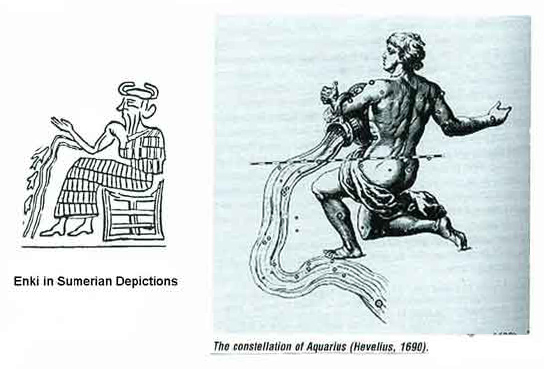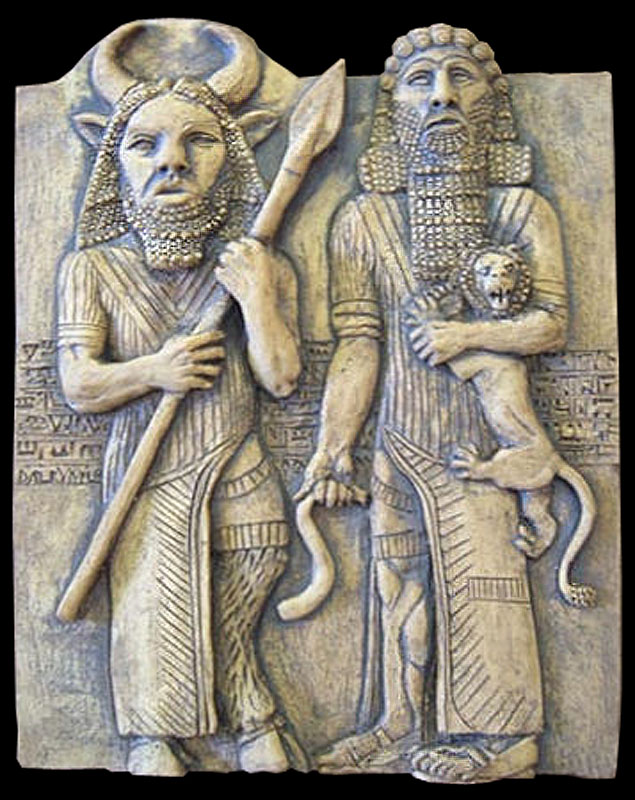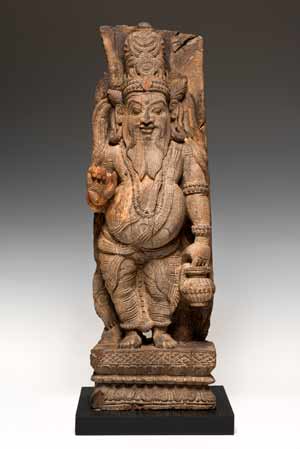ಅಸುರರ ತಲೆ ಮೇಲೆ ಕೊಂಬು ಯಾಕೆ ಇರುತ್ತದೆ ಎಂದು ಗೊತ್ತೆ? ಇದು ಐತಿಹಾಸಿಕವಾಗಿ ನಡೆದ ಒಂಧು ಘಟ್ಟದ ರಹಸ್ಯವನ್ನು ಬಿಚ್ಚಿಡಬಲ್ಲದು ಗೊತ್ತೆ? ವೇದಗಳಲ್ಲಿ ಆದಿತ್ಯರು, ವರುಣ, ಮೊದಲಾದ ದೇವತೆಗಳನ್ನು ಅಸುರರು ಎಂದು ಕರೆದಿದೆ. ಹಾಗಿದ್ದ ಮೇಲೆ ಈ ಅಸುರರು ಕೆಟ್ಟವರಾಗಿ ಬದಲಾದದ್ದು ಏಕೆ? ಸಮುದ್ರ ಮಥನ ಐತಿಹಾಸಿಕವಾಗಿ ಏನನ್ನು ತೋರಿಸುತ್ತದೆ? ನಾನು ಈಗ ತಾನೆ ಹರಪ್ಪಾ ಸಂಸ್ಕೃತಿಯ ಪಟ್ಟಣವಾದ ಗುಜರಾತಿನ ದೋಲಾವಿರೆಂಬ ಸ್ಥಳವನ್ನು ಸಂದರ್ಶಿಸಿ ಬರುತ್ತಿದ್ದೇನೆ. ಅಲ್ಲಿನ ಮ್ಯೂಸಿಯಂನಲ್ಲಿ ಒಂದು ಫಲಕ ಇಟ್ಟಿದ್ದಾರೆ. ಅದರಲ್ಲಿ ಹರಪ್ಪಾ ಜನರಲ್ಲಿ ಮೂರು ಸ್ಥರದ ಜನ ಇದ್ದರು. ಸಾಮಾನ್ಯರನ್ನು ತಾಯಿತ ಹಾಕುತ್ತಿದ್ದ ಜನರೆಂದೂ, ಆಳುವ ವ್ಯವಸ್ಥೆ ನಮ್ಮ ಈಗಿನ ಕಾಲದಂತೆ ಚುನಾಯಿತ ಮಂಡಳಿಯಿಂದ ನಡೆಯುತ್ತಿತ್ತೆಂದೂ ಹಾಗೂ ಈ ಮಂಡಳಿಯ ಜನ ಹಸುವಿನ ಕೊಂಬು ಧರಿಸುತ್ತಿದ್ದರೆಂದೂ, ಹಾಗೂ ಚುನಾಯಿತ ಮಂಡಳಿಯ ಅಧ್ಯಕ್ಷ, ಚಿನ್ನದ ಹಣೆ ಪಟ್ಟಿ ಅಥವಾ ಗೇಂಢಾಮೃಗದ ಕೊಂಬು ಧರಿಸುತ್ತಿದ್ದನೆಂದೂ ಬರೆದಿದೆ. ಅದೇ ರೀತಿ ಹಸುವಿನ ಕೊಂಬು ಧರಿಸುತ್ತಿದ್ದ ವ್ಯಕ್ತಿಯ ರುಂಡದ ಆಕೃತಿ ಸಹಾ ಸಿಕ್ಕಿದೆ. ಈ ವ್ಯಕ್ತಿಗೆ ಕೋರೆ ಹಲ್ಲು ಇಲ್ಲ. ಕೊಂಬು ಕಟ್ಟುತ್ತಿದ್ದ ಜನ ಸುರಾಪಾನ ಮಾಡುತ್ತಿರಲಿಲ್ಲ. ಹಾಗಾಗಿ ಅವರನ್ನ ಅಸುರರು ಎಂದು ಕರೆಯಲಾಗುತ್ತಿತ್ತು. ಸುರಾಪಾನ ಮಾಡುವವರು ಸುರರು. ಈಗಲೂ ನಾವು ಆಡುಮಾತಿನಲ್ಲಿ, "ನಿನ್ನ ತಲೆ ಮೇಲೆ ಕೋಡು ಇದೆಯಾ" ಎಂದು ಹೇಳುವುದನ್ನ ನೋಡುತ್ತೇವೆ. ಇದು ಜಂಭ ಮಾಡುವ ಜನರನ್ನ ಕುರುತಾಗಿ ಇರುತ್ತದೆಯೇ ವಿನಾ ಸಮಾಜ ಕಂಟಕರ ಕುರುತಾಗಿ ಅಲ್ಲ. ತಲೆ ಮೇಲೆ ಕೊಂಬು ಕಟ್ಟಿ ಮೆರೆಯುವ ಹರಪ್ಪಾ ಜನರನ್ನ "ಹೃತಿಕ್ ರೋಷನ್ ಅಭಿನಯದ ಮಹೆಂಜೋದಾರೋ" ಹಿಂದಿ ಸಿನಿಮಾದಲ್ಲಿ ತೋರಿಸಲಾಗಿದೆ.
ಈ ಆಳುವ ಮಂದಿ ಬಹಳ ಬುದ್ದಿವಂತರಾಗಿದ್ದರು. ಅವರು ಆಗಲೇ ಜನರ ಅನುಕೂಲಕ್ಕಾಗಿ ಅತ್ಯಂತ ಉತ್ಕೃಷ್ಟ ಯೋಜನಗಳಾದ, ನೀರು, ರಸ್ತೆ, ಸುಂಕ, ತೂಕದ ಬಟ್ಟು ಮುಂತಾದ ಆಚರಣೆಗಳನ್ನು ತಂದು ಭಾರತವನ್ನ ಶ್ರೇಷ್ಟ ಸಂಸ್ಕೃತಿಯ ಜನಾಂಗವಾಗಿ ಮಾಡಿದ್ದರು. ಆದರೆ ಹಿಮಾಲಯದಲ್ಲಿ ನಡೆದ ಭೂಕಂಪದಿಂದ, ನದೀ ಪಾತ್ರ ಬದಲಾಗಿ, ಭೀಕರ ಬರಗಾಲ ಅಪ್ಪಳಿಸಿತು. ಇದಕ್ಕೆ ಪರಿಹಾರವಾಗಿ, ಹಿಮಾಲಯದಲ್ಲಿ ಗೋಡೆ ನಿರ್ಮಿಸಿ ನದಿಗಳನ್ನು ತಿರುಗಿಸುವ ಮತ್ತು ಅದರಿಂದ ನದೀ ನೀರು ಮತ್ತೆ ನಗರಗಳ ಬಳಿ ಹರಿಯುವಂತೆ ಮಾಡುವ ಬೃಹತ್ ಕಾರ್ಯದ ಪ್ರಸ್ಥಾವನೆಯನ್ನ ಈ ಅಸುರರು ಮುಂದಿಟ್ಟರು. ಬಹಳ ಕಠಿಣವಾದ ಹಾಗೂ ಬಹಳ ಖರ್ಚಿನ ಈ ಸವಾಲನ್ನ ಬರದಿಂದ ಬಸವಳಿದಿದ್ದ ಮಂದಿ ಒಪ್ಪಲು ತಯಾರಿರಲಿಲ್ಲ. ಈ ಸಮಯ ಸಾಧಿಸಿ, ಅಸುರರಿಗೆ ವಿರುದ್ದವಾಗಿದ್ದ ಸುರಾಪಾನ ಮಾಡುತ್ತಿದ್ದ "ಸುರರು", ಕಟ್ಟಿದ್ದ ನಗರಗಳನ್ನು ತ್ಯಜಿಸಿ, ಇಡೀ ಜನಾಂಗವನ್ನ ಹೊಸ ನದೀ ಪಾತ್ರಕ್ಕೆ ಗುಳೇ ಹೋಗುವ ಪ್ರಸ್ತಾಪ ಮುಂದಿಟ್ಟರು. ಇಡೀ ಜನಾಂಗವೇ ಈ ಎರಡು ಬಣಗಳ ಪರ, ವಿರೋಧದ ಚರ್ಚೆಯಲ್ಲಿ ಮುಳುಗಿತು. ಈ ಕಾಲಘಟ್ಟವನ್ನೇ ಸಮುದ್ರಮಥನ ಎಂಬ ಕತೆಯಿಂದ ನಮ್ಮ ಪುರಾಣಗಳು ಶುರುಮಾಡುತ್ತವೆ. ಹಿಮಾಲಯದಿಂದ ಸಮುದ್ರದ ತೀರದ ತನಕ ಪಟ್ಟಣ, ಪ್ರದೇಶಗಳ ನೀರಿನ (ಜೀವಜಲ, ಅದಕ್ಕಾಗಿ ಅಮೃತ) ಬವಣೆ ತೀರಿಸುವ ಪ್ರಸ್ಥಾಪ ಇದ್ದರಿಂದ, ಸಮುದ್ರಮಥನದಲ್ಲಿ, ಮೇರು ಪರ್ವತ ಹಾಗೂ ಸಮುದ್ರ ಎರಡೂ ಬರುತ್ತದೆ.
ಬಸಳಿದಿದ್ದ ಮಂದಿ ಕಠಿಣ ಕೆಲಸ ಮಾಡಲು ಹಿಂದಡಿ ಇಟ್ಟು ಸುರರ ವಾದವನ್ನು ಪುರಸ್ಕರಿಸಿತು. ಜನತೆ ಅಸುರರ ವಿರುದ್ದ ತಿರುಗಿತು. ಅಸುರರು ಮತ್ತು ಅವರ ಹಿಂಬಾಲಕರು ಪಶ್ಚಿಮದ ಕಡೆ ಮುಖಮಾಡಿ ಇರಾನ್ ತಲುಪಿದರು. ಸುರರು ಮತ್ತು ಅವರನ್ನು ಅನುಸರಿಸಿದ ಮಂದಿ ಪೂರ್ವದ ಕಡೆ ಮುಖ ಮಾಡಿ ಗಂಗಾ ತೀರ ತಲುಪಿದರು. ಗಂಗೆಯ ಪಾನ ಮಾಡಿದ್ದೇ " ಅಮೃತಪಾನ". ಅಂದಿನಿಂದ ನಮಗೆ ಗಂಗೆ ಅತ್ಯಂತ ಪವಿತ್ರ ವಾಯಿತು. ವೇದ ಕಾಲದ ಸಾಹಿತ್ಯ, ದೇವತೆಗಳನ್ನು ಬದಿಗಿರಿಸಿ, ಪುರಾಣಕಾಲದ ಹೊಸಾ ದೇವರು, ಬಲಿ ಮುಂತಾದ ಬಹಳಷ್ಟು ಆಚರಣೆಗಳು ಹೊಸದಾಗಿ ಪ್ರಾರಂಭವಾಯಿತು. ಕೆಲಸ ಬಿಟ್ಟು ದೇವರನ್ನು ಓಲೈಸಿ, ಬೇಡಿ, ಕೊರಿಕೆ ಈಡೆರಿಸಿಕೊಳ್ಳ ಬಹುದೆಂಬ ಆಶಾಭಾವನೆ ಶುರುವಾಯಿತು. ಅಂದಿನಿಂದ ವೈದಿಕವಾಗಿದ್ದ ಪ್ರಕೃತಿಯ ಆರಾಧನೆ, ಆಚರಣೆ ಬಿಟ್ಟು, ಪೂಜೆ, ಪುನಸ್ಕಾರ ಹೆಚ್ಚಾಯಿತು. ಪುರಾಣಗಳು ದೇವತೆಗಳ ಲೋಲಪತೆ, ಸುರಾಪಾನ, ನೃತ್ಯ, ಸಂಗೀತದಲ್ಲಿ ಮುಳುಗುವುದು, ಬಹಳ ಶ್ರೀಮಂತ ಬದುಕನ್ನ ತೋರಿಸುವಂತೆ ಬರೆಯಲಾಯಿತು. ಇದು ಸುರರ ಅಧಿಕಾರವನ್ನ ಗಟ್ಟಿಗೊಳಿಸಲು ಹಾಗೂ ಅಧಿಕೃತಗೊಳಿಸಲು ಸಹಕಾರಿಯಾಯಿತು.ವೇದದ ದೇವತೆಗಳಿಗೂ, ಪುರಾಣದ ದೇವತೆರಗಳಿಗೂ ಅಜಗಜಾಂತರ ವ್ಯತ್ಯಾಸವನ್ನ ನಾವು ಇಂದೂ ಗುರುತಿಸಬಹುದು. ಸುರ- ಅಸುರ ಹೆಸರು ಬದಲಿಸಿ, ದೇವ-ದೈತ್ಯ ಅನ್ನುವ ಹೊಸಾ ಹೆಸರು ಶುರುಮಾಡಲಾಯಿತು. ಮನುಷ್ಯರಿಗಿಂತ ಎತ್ತರದ ಯಾವ ದೈತ್ಯರ ಕುರುಹೂ ಪ್ರಪಂಚದಲ್ಲಿ ಸಿಕ್ಕಿಲ್ಲ. ಈ ದೈತ್ಯ ಅಂದರೆ ಉಚ್ಚ (ಬುದ್ದಿವಂತ, ಉನ್ನತ ಸ್ಥರದ ವ್ಯಕ್ತಿ) ಎನ್ನವ ಅರ್ಥವೇ ಹೊರತು ದೇಹದ ಆಕೃತಿಯನ್ನು ತೋರಿಸುವ ಪದ ಅಲ್ಲ. ಅಷ್ಟರ ಮೇಲೆ ಪುರಾಣಗಳು ಹೇಳುವ ಹಾಗೆ ಸುರ-ಅಸುರರು ಕಶ್ಯಪನ ಮಕ್ಕಳು, ಬೇರೆ ಬೇರೆ ಹೆಂಡತಿಯರ ಹೊಟ್ಟೆಯಲ್ಲಿ ಹುಟ್ಟಿದರು ಅಷ್ಟೆ. ತಾಯಿ ಬೇರೆ ಆದರು, ತಂದೆಯ ಗೊತ್ರ ಬರುವುದರಿಂದ ಎರಡು ಪಂಗಡಗಳು ಬೇರೆ ಆಗಲು ಸಾಧ್ಯ ಇಲ್ಲ. ರಾವಣ ಮತ್ತು ಅವನ ತಮ್ಮಂದಿರು ಬ್ರಾಹ್ಮಣರು, ಆದರೆ ಅಸುರ. ಇದು ಹೇಗೆ? ವಿಚಾರ ಮಾಡಿ. ಅಸುರ ಅನ್ನುವುದು ಉತ್ಕೃಷ್ಟ ಮೇಧಾವಿ ಶಕ್ತಿ ಇರುವ ವ್ಯಕ್ತಿ ಅನ್ನುವು ವಿಶೇಷಣವಾದರೆ ಮಾತ್ರ, ರಾವಣ ಅಸುರನಾಗಲು ಸಾಧ್ಯ.
ಎಡಪಂಥೀಯರು ತಿಳಿಸುವಂತೆ, ಆರ್ಯರು ಹಾಗೂ ದ್ರಾವಿಡರ ಸಂಘರ್ಷ ಇರಲಿಲ್ಲ. ಆರ್ಯರು ದ್ರಾವಿಡರನ್ನು ದಕ್ಷಿಣದ ಕಡೆ ಓಡಿಸಲಿಲ್ಲ. ಈ ದ್ರಾವಿಡರು ರಾಕ್ಷಸರು (ಕಪ್ಪು ಬಣ್ಣದ), ಬಿಳಿ ಬಣ್ಣದ ಆರ್ಯರು ಇರಾನಿನಿಂದ ಬಂದವರು ಎಂಬ ಕಟ್ಟು ಕತೆಯನ್ನ ಬ್ರಿಟೀಷರು ಹೆಣೆದರು (ಉತ್ಜತರ-ದಕ್ನಷಿಣ ಅಂತ ಜರನ್ನ ಒಡೆಯಲು ಸೃಷ್ಟಿಸಿದ್ದು). ಆದರೆ ನಿಜ ಬಹಳ ಬೇರೆಯದ್ದಾಗಿದೆ. ಭಾರತದಿಂದ ಇರಾನಿಗೆ ಈ ಅಸುರರ ವಲಸೆ ನಡೆಯಿತು. ಸುರರ ಮತ್ತು ಅವರ ಪರವಾದ ಜನತೆಯ ಸಹಕಾರ ಇಲ್ಲದೇ ಅಸುರರು ಹಿಮಾಲಯದಲ್ಲಿ ಗೋಡೆ ಕಟ್ಟಿ, ನದಿಯನ್ನು ತಿರುಗಿಸುವುದು ಸಾಧ್ಯವಿರಲಿಲ್ಲ. ಬಹಳಷ್ಟು ಜನ ವಲಸೆ ಹೋದ ಮೇಲೆ, ಬರದ ನಾಡಲ್ಲಿ ಜೀವಿಸಲೂ ಸಾಧ್ಯವಿರಲಿಲ್ಲ. ಹಾಗಾಗಿ ವಿಧಿ ಇಲ್ಲದೇ ಅಸುರರು ಭಾರತ ಬಿಟ್ಟು ಪಶ್ಚಿಮದ ಕಡೆ ಮುಖ ಮಾಡ ಬೇಕಾಯಿತು. ವ್ಯಾಪಾರ ಹಾಗೂ ವಹಿವಾಟಿನಿಂದ ಮೆಸೆಪಿಟೋಮಿಯಾ ಹಾಗೂ ಇರಾನಿನ ಸಂಪರ್ಕ ಇದ್ದ ಅಸುರರು, ಇರಾನಿಗೆ ತೆರಳಿದರು.
ಇರಾನ್ ತಲುಪಿದ ಮಂದಿ "ಅಸುರ ಮಜ್ದ" ನನ್ನು ಪ್ರಮುಖ ಮಾಡಿ, ಸುರರನ್ನು ಹೀಗಳೆದು ಜರೋರಾಶ್ಟ್ರಿಯನ್ (ಪಾರ್ಸಿ) ಪಂಗಡವಾಯಿತು. ಈ ಪಾರ್ಸಿ ಜನ ಈಗಲೂ "ದೇವ/ ಸುರ" ರನ್ನು ಸೈತಾನ ಎಂದು ಬಿಂಬಿಸುತ್ತಾರೆ. ಮುಂದೆ ಅಸುರ ಜನ, ಇರಾನಿನಿಂದ, ಈಜಿಪ್ಟ್ ಹಾಗೂ ಐರೋಪ್ಯರಾಷ್ಟ್ರ ತಲುಪಿದರು. ಇವರು ತಮ್ಮ ಊರು ಕಟ್ಟುವ ಕೆಲಸ ಮುಂದುವರೆಸಿದರು. ಆದ್ದರಿಂದ ಉತ್ಕೃಷ್ಟ ಕಟ್ಟಡ, ರಸ್ತೆ, ಊರು ನಾವು ಪಶ್ಚಿಮದಲ್ಲಿ ಈಗಲೂ ನೋಡ ಬಹುದು (ಇಜಿಪ್ಟಿನಿಂದ ಶುರುವಾದ ಇವರ ಇತಿಹಾಸ ರೋಮನ್ ಸಾಮ್ರಾಜ್ಯದಲ್ಲಿ ಕಳೆಗಟ್ಟುತ್ತದೆ).. ಕಟ್ಟುವ ಕೆಲಸ ಬಿಟ್ಟು ಅಸುರರನ್ನು ಹೀಗಳೆದ ನಾವು ಉತ್ಕೃಷ್ಟ ಹರಪ್ಪಾ ನಗರಗಳಿಂದ ಹಿಂದೆ ಬಂದು ಬೇಕಾಬಿಟ್ಟಿ ಬದುಕುತ್ತಿದ್ದೇವೆ. 5000 ವರ್ಷಗಳ ಹಿಂದೆಯೇ ರಸ್ತೆ, ನೀರು ಮತ್ತು ಶೌಚ ವ್ಯವಸ್ಥೆ ಹೊಂದಿದ್ದ ನಾವು ಇಂದು, ಸ್ವಚ್ಚಭಾರತ ಅಂತ ಅರಚುವ, ೨೧ನೇ ಶತಮಾನದಲ್ಲೂ ಶೌಚ ವ್ಯವಸ್ಥೆ ಇರದ ಪಟ್ಟಣಗಳಿಂದ ತುಂಬಿದ ದೇಶವಾಗಲು ಇನ್ನು ಯಾವ ಕಾರಣವೂ ಇಲ್ಲ. ಅಸುರರು ಭಾರತ ತ್ಯಜಿಸಿದ ನಂತರ ಹರಪ್ಪಾದಂತೆ ಇನ್ನೂಂದು ಪಟ್ಟಣ ನಿರ್ಮಾಣ ನಾವು ಮಾಡಿಲ್ಲ (planned city with full municipal water & sewage management, food security, closed drainage, garbage management, planned markets, fair trade etc).
ಈ ರೀತಿ ಬುದ್ದಿವಂತರನ್ನು ಹೀಗಳೆದು ದೇಶ ಬಿಟ್ಟು ಓಡಿಸುವುದನ್ನು ನಾವು ಮುಂದುವರೆಸಿದ್ದೇವೆ. ಭಾರತದ ಬಹಳಷ್ಟು ಬುದ್ದಿವಂತರು ಇಂದು ಅಮೇರಿಕಾ, ಜರ್ಮನಿ, ಆಸ್ಟ್ರೇಲಿಯಾ, ಅರೇಬಿಯಾ ಮುಂತಾದ ರಾಷ್ಟರಗಳಿಗೆ ತೆರಳಿ, ಆ ದೇಶಗಳನ್ನು ಕಟ್ವುವ ಕೆಲಸದಲ್ಲಿ ತೊಡಗಿದ್ದಾರೆ. ಕೆಲಸ ಆದ ಮೇಲೆ, ಆ ಕೆಲಸವನ್ನು ಅಲ್ಲಿನ ಮಂದಿ ತಮ್ಮದೇ ಮುಖ್ಯಸ್ಥನ ಹೆಸರಿಗೆ ಬರೆಯುತ್ತಾರೆ. ಭಾರತದ ಮಂದಿ ಬರೀ ಪುಡಿಗಾಸು ಪಡೆದು ದೇಶ ಭ್ರಷ್ಟರಾಗಿ ನರಳುತ್ತಾರೆ. ನಮ್ಮದೇ ದೇಶ ಕಟ್ಟದ್ದರೆ, ಅವರ ಮಕ್ಕಳು ಹೆಸರು ಹೇಳಿಕೊಂಡು, ತಂಪಾಗಿ ಬದುಕಬಹುದಿತ್ತು.
http://soghal.blogspot.in/2017/12/who-are-asuras-do-we-find-historical.html
Sura means people who do surapana (Drink liquor). Asura means who do not drink. Add to this the following equations
1) As no proof of a king is found in Indus Valley Civilisations, The ruling system is deemed to be a republic
2) Commoners were identified with a pendant/Amulets
3) Ruling elite who were part of council (who are supposed to be intelligent & smart) were identified with cow horns
IVC clay figurine with horns but without canine tooths
3) The chief/chairman of the council was wearing a golden head band or a horn of Rhinosarus
The IVC republican system transmigrated to later system of "Maha Janapads". These Maha Janapads existed around Ganges. Magadha became powerful and slowly merged all republics under its arms to form a kingdom ruled by a king.
The ruling elite, were supposed to be idealistic in their life. They did what they could to design a world class water distribution system. However the tectonic shift in Himalayas caused earthquakes and shifting of lifeline rivers. The failure to visualise this natural calamity eroded the confidence level in the council members. The resulting revolt by the commoners could have vilified the council members. These council members became "Asuras" (like our politicians today). The villification gives them a canine teeth with horns. The celebrated people became most hated people for no fault. They probably took too much credit when things happened as per their prediction and failed to explain natural calamities. People believed natural calamities as anger by gods and ruling elite did not do enough to please gods. Commoners thought, elites are accumulating wealth with selfish motive and instead of offering sacrifices to gods. This could have generated anger, frustration during long drought years.
Asuras were contrasted with Suras (The outclass, who drink, dine and Gamble). These outclass utilised the scenario of draughts and dislodged the. Council. This is the reason, Asuras were shown with horns in Indian Mythology. The Suras were depicted as rich people engaged in drinking, dining and enjoying eternally (An hypothetical Gambler).
Samudra Mthana using mount meru is not a mythical story. Asuras wanted to divert back the rivers by constructing barrages in Himalayas. Suras wanted to shift the population to newly formed river plains (Ganges and Yamuna). Asuras thought abondfoning cities is not a sensible thing, as rivers might shift again. But due to gigantic effort involved, Suras won the support of people. The Amruth, is nothing but the water, that was life line for IVC people.
The Suras were imperialists. They were under constant threat for seat of power by another Sura or were fearfull for a revolt from public. So they were always short sighted and concentrated efforts to build forts to guard their power. This contrasts with the long term planning exhibited at creating public infrastructures by Asuras. This logically explains, why Harappan sites were abandoned and migrated people did not attempt to recreate cities, with what was already established as a proven technology. We see continuity in pottery, weights etc, but not in planned cities. Indian sub continent still suffers from sura rules with least public infrastructures.
The following is discussed for charvakas. Note the upanishad quote. Can that sloka was not intentional but speaks the truth that, there were attempts to project Asuras as "bad/evil" and Sura as "good". Note the intention is stated as deluding to destroy "Asuras"???
how then , without the original works of this Charvaka (or otherwise also called as lokayata philosophy) was spread or even propagated as an atheist philosophy is still a big question. The only possibility is that it is clearly a mischief of some deluded people who hatched their own ideas and propagated under the Name Charuvaka, the sweet talker (who must have been a famous sage or a spiritual practitioner) . And for their support they have even managed to insert verses into the sacred scriptures to make it appear more authentic . The first ever example for such alterations / adulterations can be seen in Maitrayani-Upanishat, which is self-contradictory.
मैत्रयणीयॊपनिषत् 07.09
बृहस्पतिर्वै शुक्रो भूत्वेंद्रस्याभयायासुरेभ्यः क्षयायेमामविद्यामसृजत् तया शिवमशिवमित्युद्दिशंत्यशिवं शिवमिति वेदादिशास्त्रहिंसकधर्माभिध्यानमस्त्विति वदंति अतो नैनामभिधीयेतान्यथैषा बंध्येवैषा रतिमात्रं फलमस्या वृत्तच्युतस्येव नारंभणीयेत्येवं ह्याह || 07.09 ||
Brihaspati, having become Sukra, brought forth that false knowledge for the safety of Indra and for the destruction of the Asuras. By it they show that good is evil, and that evil is good. They say that we ought to ponder on the (new) law, which upsets the Veda and the other sacred books. Therefore let no one ponder on that false knowledge: it is wrong, it is, as it were, barren. Its reward lasts only as long as the pleasure lasts, as with one who has fallen from his caste. Let that false science not be attempted, for thus it is said.
The above verse says that the sage brihaspati himself became Shukracharya to delude the asuras which is evidently a false information.
This insertion became the base for later scholars & has encouraged other evil minded fools also, posing as scholars to insert their own ideas in puranas, smrithis etc.. telling that Vishnu asked shiva to create shastras to delude the mass.
One of these Asuras, Asura Mazda/Ahur Mazda Formed Zoroarastrianism. Zoroastrianism was the most prominent religion of Mesopotamia. What are their beliefs? Firstly, that their God is Ahur Mazda. Secondly, they believe in a certain powerful satanic spirit called Ahriman. And their scriptures talk about two types of people -- Yazats and Devas. Devas are symbolic of the evil spirit, an embodiment of all that should not be. Even now, when people of the Mesopotamian region talk about Devas, they talk about them with disgust -- that is the kind of hatred that the Devas have generated. And most importantly, they are led by the demonic evil spirit called Ahriman. On the other hand, Yazats are the followers of the Supreme God Ahur Mazda. They are the righteous people, an embodiment of everything that should be correct.

KJ Roach M9 Mesopotamia - seal
Note, seated person with crown. The seated person is holding a overflowing pot of water. Other person is with Shaven head (Sura??), Third person is with horns..Does this Indicate Harappan "Sura" & "Asura" making representation before the chief of union? The "crown' hat person of this type is regarded as "God" in mesopotamia.

Ea/Enki (sumerian) is depicted in Mesopotamian art as a bearded god who wears a horned cap and long robes. Other mythical creatures also dwelt in the abzu with Ea, including the seven mythical sages (apkallū) who were created for the purpose of teaching wisdom to humanity. Exactly saptharshi comes in Indian purana also. They were the beginners of Gothras (teaching Vedas and starting vedic practices).
The subterranean ocean, or apsû, was the abode of Enki / Ea, and the source of incantations, purification rites and demons, disease, and witchcraft. "Apsu", Vedas refer water as "Apa".
Does the constellation "Aqauaris" or "Kumbha" represent this story?

Babylonian limestone kudurru depicting a turtle, which was a symbol of Enki; 1125BC-1100 BCE (BM 102485). © The Trustees of the British Museum.


Enkidu and Gilgamesh. Does Enkidu represent "Asura" from India?
Turtle was the symbol of Enki. A Turtle was holding the meru (the biggest problem) while "Sura" and "Asura" were discussing water issue. How similar!

Sculpted reliefs depicting Ashurbanipal, the last great Assyrian king, hunting lions, gypsum hall relief from the North Palace of Nineveh (Irak), c. 645-635 BC, British Museum.

The bronze statue from Enkomi.

The god Ea at far left, wearing the horned headdress indicative of divinity, with water coursing from his shoulders. A fish-apkallū is in the iconic posture with right hand raised in blessing or exorcism, with the banduddu bucket in his left hand. The next apkallū wields an indistinct and as yet undefined angular object in his right hand, with the typical banduddu bucket in his left. The entity at far right, which appears to be wearing a horned tiara indicative of divinty, remains unidentified and undefined.


Now see Agstya statue..a typical saint from India..
a) Similar Beard
b) Bandudu Bucket - Kamandala
c) Un-identified angular Object -> Dharbhe
Gudea Statue. A baked-clay plaque from Ur, Iraq, portraying a goddess; she holds a vase overflowing with water ('hé-gál' or 'hegallu') is a symbol of abundance and prosperity. This fascinating masterwork in diorite and some other valuable artifacts were dated back to 4000 and 3000 BC.
Notice how Gudea statue matches with Dhanvanthari bringing "Amrutha". We could say, Amrutha is nothing but "Water"
Indian scriptures tell us that their civilization was made up of two types of beings -- Devas and Asurs -- born of the same parent. Devas, being virtuous, were the toast of all and were bestowed with most of the important and responsible posts of the world by God, while Asurs were deemed incapable and got the raw deal. Asurs were miffed by this and were led away to a far off existence of their own, in defiance of the divine ordinance. Once in a while, they waged wars with Devas to reclaim their motherland. This description of the sequence of events tallies with the legends and scriptures of Mesopotamia. As per Mesopotamian legends, they were once the servants of Gods. They revolted against the Gods and Gods found them difficult to handle, which forced Gods to expel or let the Mesopotamians go to a far off existence. That is how Mesopotamians came into existence. This description of events tallies with other legends of Mesopotamia as well, like the Zurvan tales. All the legends of both the regions tally with each other.
Ref to Asuras Mazda is from link http://www.viewzone.com/zo.html .. Read the link that is bugging historians about the contradictions.
Now do you see why Devas are evil in Mesopotamia?
The vedic gods and puranic gods differ in India. Samudra manthan is the start of puranas in India. The puranas changed the narrative of vedic gods. The suras converted a historic event (A crisis on water) in to a story of Amrita. Amrita is nothing but "water".
More on zoroastrianism connection with veda, Asura - ahura etc at
http://www.hindupedia.com/en/Zoroastrianism_and_Hinduism

This shows Detail of a cylinder seal from Sippar (2300 BC) depicting God Shamash with rays rising from his shoulders and holding a saw-toothed knife with which he cuts his way through the mountains of the east at dawn (British Museum)
This may actually be showing the plan of cutting Himalayas to re route the river in Indus. Mountains, Saw toothed Knife, cutting mountain.. God EA with river all conincidental??














































